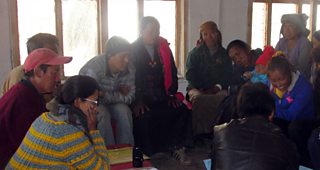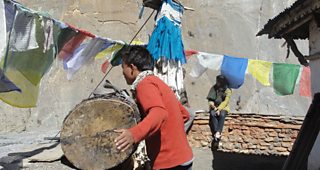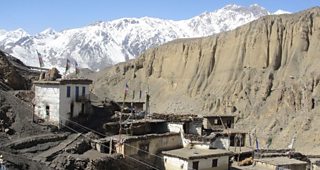
So spoke a woman in Lupra, a village in the mountainous district of Mustang in Nepal which I visited earlier this year. I was in her village to run a community assessment for the Climate Asia project, a research and communications project that aims to understand people perceptions, experiences and responses to climate change to inform communication activities and programmes that can help them.
With a heartbreaking air of helplessness, the woman told me how the villagers have to cope with landslides and floods every year. She told me they’re also very afraid of “glacier lake outburst floods” (GLOFs), which could sweep away their homes at any time.�� The floods, she said, were increasing because of the ice melting on the mountains.
I had many conversations like this during the project. And every time I would ask myself how our project could help people like her.
��

A man calls the villagers to gather for the Climate Asia community assessment by beating his drum.
Hunger for information
During my discussions with the villagers, I found that they were hugely interested in the research and really wanted information about how to cope with their situation.
Using their own money, the village had adapted to their changing environment already, building pipes to bring water up to their village and small water collection tanks, in addition to strengthening their flood defences.

Knowing your audience
After two years of talking to people like the villagers in Lupra and writing reports, we launched our findings this week in Kathmandu.
As we presented our results in front of non-governmental organisations, academics and media professionals, I couldn’t help but remember the despair and demand for information I encountered in Lupro and thought, will people really able to understand their predicament and be able to respond?
Thankfully, my fears were quickly abated and I will always remember our launch day as a special and positive moment.
Not only did lots of people attend the launch but they showed a lot of interest in our findings and how these can help them to support people. There was a very positive response and an interest in using not only our data but also the toolkits we created to help organisations, government and media design communications.
While there's a long way to go, I'm hopeful that villages like Lupra won’t feel as helpless as before.
��
Related links
Follow �������� Media Action on and
